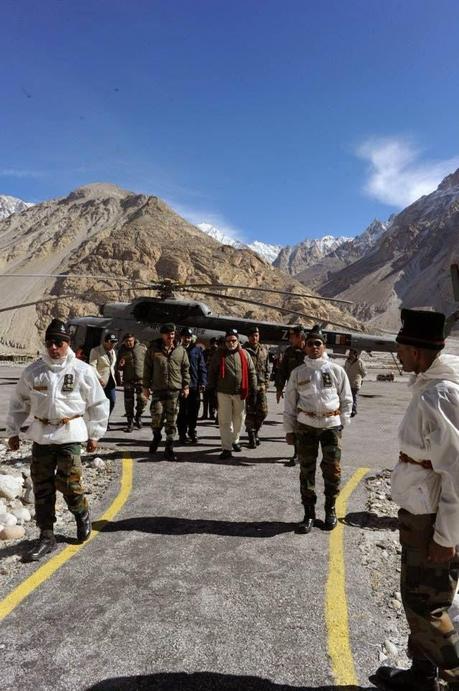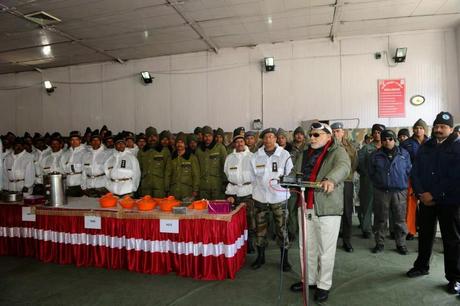 Prime Minister Narendra Modi on Thursday paid a
surprise visit to Siachen to celebrate Diwali with soldiers posted at the
world’s highest battlefield and hailed the role of the armed forces in securing
the country. Before reaching Srinagar, he went to Siachen early in the morning
and spent more than an hour with the soldiers at a base camp situated at a
height of over 12,000 feet.
Prime Minister Narendra Modi on Thursday paid a
surprise visit to Siachen to celebrate Diwali with soldiers posted at the
world’s highest battlefield and hailed the role of the armed forces in securing
the country. Before reaching Srinagar, he went to Siachen early in the morning
and spent more than an hour with the soldiers at a base camp situated at a
height of over 12,000 feet.
 He praised their valour and courage, saying that
125 crore Indians could celebrate Diwali, and go about their lives in comfort,
because the jawans stood guard at the borders, prepared to make every sacrifice
for the nation. From the icy heights, he also extended Diwali greetings to
President Pranab Mukherjee. Mr. Modi told the jawans that he had come
unannounced, and they may be surprised, but one does not need to announce
arrival when coming to one’s own family.
Jai Jawan ~ hail the act of our Prime Minister
He praised their valour and courage, saying that
125 crore Indians could celebrate Diwali, and go about their lives in comfort,
because the jawans stood guard at the borders, prepared to make every sacrifice
for the nation. From the icy heights, he also extended Diwali greetings to
President Pranab Mukherjee. Mr. Modi told the jawans that he had come
unannounced, and they may be surprised, but one does not need to announce
arrival when coming to one’s own family.
Jai Jawan ~ hail the act of our Prime Minister
With regards – S. Sampathkumar

